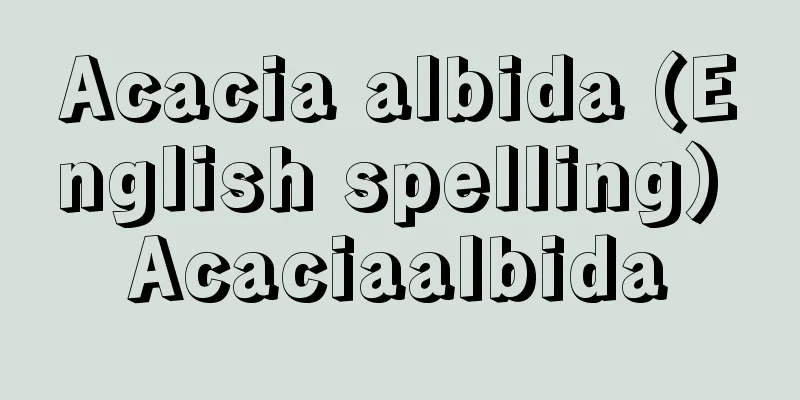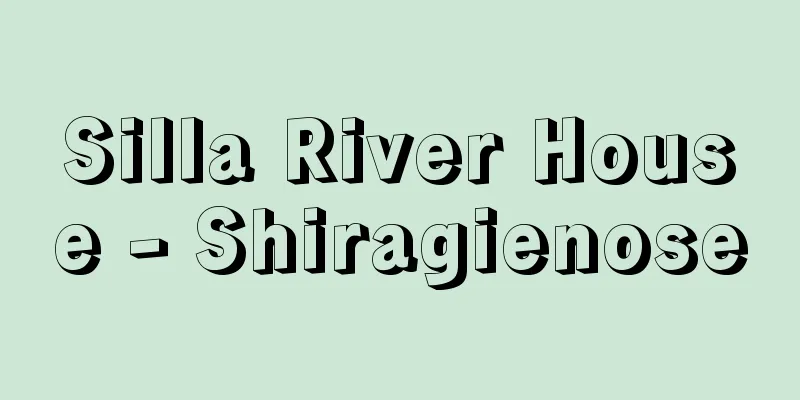Kuya

|
He was also called "Kouya" and written as "Kouya". He was a representative religious figure among the common people in the mid-Heian period. His monk name was Kosho. His origins are unknown, but there is a theory that he was of the imperial line. He traveled around the country as an upasaku from a young age, and when he was about 20 years old, he shaved his head at Kokubunji Temple in Owari (Aichi Prefecture) and took the name Kuya. During his travels, he smoothed out rough roads, built bridges, dug wells, and cremated those who had been buried in the wilderness due to exposure to the elements, chanting the myogo of Namu Amida Butsu before burying them. As he constantly chanted this myogo, he was commonly called Amida Hijiri, and the well he dug was called Amida Well. He entered Kyoto in 938 (Tenkei 1), where he is said to have traveled around the city begging for food, and given any donations he received to the poor and sick. In 948 (Tenryaku 2), he ascended to Mount Hiei and was ordained by Tendai abbot Ensho (880-964). He was given the monk name Kosho, but he himself took the novice name Kuya, and was a saint who promoted the Nembutsu faith of the common people. It is said that it was thanks to Kuya that people of all ranks, ages and genders, began chanting Nembutsu after the Heian period, and his achievements in spreading Buddhism through his travels around the Tohoku region were long remembered by the people of this remote region. Even when he was alive, Kuya was called Ichinohijiri (City Saint), because he stood at the gates of the Higashiichi and Nishiichi areas of Kyoto, where many people gathered, and encouraged people to practice Nembutsu and Pure Land faith. On the gates of these areas, he wrote a note saying, "I have heard that paradise is far away, but I have made an effort to reach it in an instant," and preached about quick rebirth in heaven. He also performed the dance nembutsu as a movement to spread Nembutsu, and later, the dance nembutsu of Ippen and the Jishu sect also considered Kuya to be the founder. While he promoted Nembutsu for rebirth in the Pure Land, in 950 (Tenryaku 4), he collected donations from the people and erected a 1-jo (3.2 m) Kannon statue, and 6-foot (2.2 m) statues of Bonten, Taishaku, and the Four Heavenly Kings. He also vowed to copy 600 volumes of the Great Perfection of Wisdom Sutra in gold paint, which he completed in 963 (Owa 3) after 13 years, and built Saiko-ji Temple (later Rokuharamitsuji Temple) east of the Kamo River, where he held a memorial service for the copying of the Great Perfection of Wisdom Sutra, thereby spreading Buddhism in a variety of ways. He passed away on September 11, 3rd year of Tenroku. Kuya's fame seems to have been high even while he was alive, as there remain poems and prose from the flower offering ceremony at Rokuharamitsuji Temple, which show his friendship with aristocrats and literary men of the time. As seen in paintings and sculptures, Kuya's travels were depicted in a short robe that reached down to the shins, straw sandals, a gong stand on his chest, and a shumoku (clamshell) and a deer antler staff in his hands. The travelling saints who carried on Kuya's will also dressed in this way, so they were called Amida saints, gong-hitting saints, and bowl-beaters, and built Kuya-do halls in various places to worship Kuya and formed a group of Kuya monks. Later, Kuya-do halls came to be known as Kuya's grave, and there are many places across the country that claim to be his grave. However, the Kuya Exhortation (1 volume, by Minamoto no Tamenori), written after Kuya's death, makes it impossible to deny that his grave is at Saikoji Temple. [Shige Gorai June 20, 2017] "Kuya" by Ichiro Hori (1963, Yoshikawa Kobunkan) " "Tendai and Pure Land Buddhism - Concerning Kuya" by Takashi Nabata (included in "Studies on the History of Pure Land Buddhism in Japan" 1969, Heirakuji Shoten) [References] | | | |Source: Shogakukan Encyclopedia Nipponica About Encyclopedia Nipponica Information | Legend |
|
「こうや」ともいい、弘也とも書く。平安中期の代表的庶民宗教者。僧名は光勝(こうしょう)。出自については不明であるが、皇統から出たという説がある。若いころから優婆塞(うばそく)として諸国を巡歴し、20歳余のとき尾張(おわり)(愛知県)の国分寺で剃髪(ていはつ)、自ら空也を名のったという。遊行(ゆぎょう)中、彼は、険しい道路を平らげ、橋を架け、井戸を掘り、荒野に風葬死者があれば火葬に付して、南無阿弥陀仏(なむあみだぶつ)の名号(みょうごう)を唱えて葬った。また絶えずこの名号を唱えていたので俗に阿弥陀聖(ひじり)といわれ、掘った井戸は阿弥陀井とよばれた。938年(天慶1)京都に入ったが、町中を遊行して乞食(こつじき)し、布施(ふせ)を得れば貧者や病人に施したと伝える。948年(天暦2)比叡山(ひえいざん)に上り、天台座主(ざす)延昌(えんしょう)(880―964)について得度。光勝という僧名をもらったが、自らは空也の沙弥(しゃみ)名を名のり、庶民信仰の念仏を勧める聖(ひじり)であった。平安時代以降、貴賤(きせん)老若男女が念仏を唱えるようになったのは、空也のおかげであるといわれ、また東北地方を遊行して仏教を広めた功績は、この辺境の人々に長く記憶された。空也は生存時から市聖(いちのひじり)ともよばれたが、これは人の集まりやすい京都の東市、西市の市門に立って人々に念仏と浄土信仰を勧めたからである。その市門には「極楽(ごくらく)ははるけきほどと聞きしかど、つとめて(瞬時に)いたる所なりけり」と書きつけて、速疾往生(そくしつおうじょう)を説いた。そして念仏を広める運動として踊念仏(おどりねんぶつ)をしたので、後世、一遍(いっぺん)と時衆(じしゅう)の踊念仏も空也を祖とする。このように浄土往生の念仏を勧める一方、950年(天暦4)人々から浄財を集めて、1丈の観音(かんのん)像、6尺の梵天(ぼんてん)・帝釈(たいしゃく)・四天王の像を造立した。また金泥(こんでい)の『大般若経(だいはんにゃきょう)』1部600巻の書写を発願、13年間かかって963年(応和3)に完成し、賀茂川の東に西光(さいこう)寺(後の六波羅蜜寺(ろくはらみつじ))を建て、『大般若経』の書写供養を行うなど多角的な仏教を広めた。天禄(てんろく)3年9月11日入滅(にゅうめつ)。空也の名声は生存時から高かったとみえて、当時の貴族・文人との交遊を示す六波羅蜜寺供花会(くげえ)の詩文が残っている。 空也の遊行のありさまは絵画や彫刻に残っているように、短い衣を脛高(はぎだか)に着て草鞋(わらじ)を履き、胸に鉦鼓(しょうこ)台をつけて鉦(かね)を下げ、手に撞木(しゅもく)と鹿角杖(わさづえ)を持っていた。空也の意志を継ぐ遊行聖もこの姿であったので、彼らは阿弥陀聖とも鉦打(かねうち)とも鉢叩(はちたたき)ともよばれ、各地に空也を祀(まつ)る空也堂を建てて空也僧集団を形成した。のち空也堂が空也の墓といわれたために、全国各地に空也の墓と称するものが多数ある。しかし空也入滅後に書かれた『空也誄(くうやるい)』(1巻、源為憲(みなもとのためのり)作)によって、その墓が西光寺にあることは否定できない。 [五来 重 2017年6月20日] 『堀一郎著『空也』(1963・吉川弘文館)』▽『名畑崇著『天台宗と浄土教――空也をめぐって』(『日本浄土教史の研究』所収・1969・平楽寺書店)』 [参照項目] | | | |出典 小学館 日本大百科全書(ニッポニカ)日本大百科全書(ニッポニカ)について 情報 | 凡例 |
Recommend
History of the Five Generations
[1] China's official history. 150 volumes. Com...
Kosaku Yamada
Year of death: December 29, 1965 Year of birth: Ju...
Financial Market
In a broad sense, it refers to all markets where ...
Roach, H.
…An American comedian from the silent film era, h...
Submaxillary gland
…This opening is called the parotid papilla becau...
Tanshigaisha (English spelling) Call loan dealer
Legally, it is a money lending business regulated ...
Fumi Ota
Documents that were created mainly during the Kam...
Meeting degree - Kaigoudo
...Such a unit is called an aggregate. When the n...
Ali bun Laban Attabaly - Ali bun Laban Attabaly
... Based on the above-mentioned translation peri...
Crete [island] - Crete
A Greek island in the eastern Mediterranean, about...
Squid Streamer
…The character for kite is a Japanese character. ...
Ball stand - Kyudai
…When a sphere intersects with a plane, the part ...
Corpus luteum
A component of the ovary in vertebrates. The egg ...
Shiga Shigetaka
Year of death: April 6, 1927 Year of birth: Bunkyu...
Sendensho - Sendensho
An early Ikebana handbook. Also known as the "...









